- Like
- SHARE
- Digg
- Del
- Tumblr
- VKontakte
- Flattr
- Buffer
- Love This
- Save
- Odnoklassniki
- Meneame
- Blogger
- Amazon
- Yahoo Mail
- Gmail
- AOL
- Newsvine
- HackerNews
- Evernote
- MySpace
- Mail.ru
- Viadeo
- Line
- Comments
- Yummly
- SMS
- Viber
- Telegram
- JOIN
- Skype
- Facebook Messenger
- Kakao
- LiveJournal
- Yammer
- Edgar
- Fintel
- Mix
- Instapaper
- Copy Link
What is Men’s Physique?
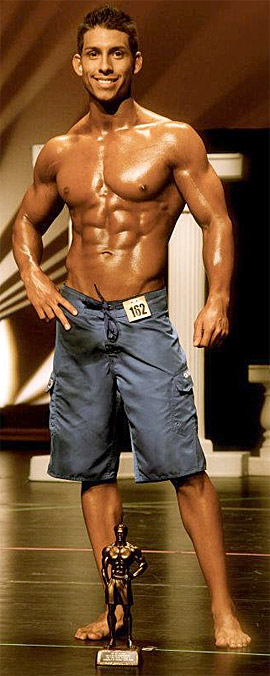
By Julian Brown, BS, ACE-CPT, NASM-FNS
You may have noticed the men’s physique class taking the mainstream by storm when it comes to bodybuilding/physique competitions.
Although some aspects are similar to bodybuilding, there are some vast major differences in the men’s physique category.
Men’s physique is a relatively new category in the bodybuilding/physique competition world in which contestants perform quarter turns wearing board shorts (about an inch above the knees), and are judged based upon muscularity, body conditioning, symmetry, and stage presence.
Contestants should be fit and display proper shape and symmetry, but extreme muscularity and conditioning such as what’s typically seen in bodybuilding is frown upon.
Show Day, Dieting, and Training Tips for Physique
Show Day Considerations
Quarter Turns/Posing
During the comparison round, judges will observe competitors in group setting and have them perform quarter turns to access their physiques from the front, both sides, and rear.
Competitors should practicing posing in order to display their physique in the best possible manner.
Also, appearing confident and displaying polished posing will enhance stage presence.
Stage Presence
Proper stage presence and confidence is needed to successfully express personality, charisma, and charm to judges and audiences.
Although this criteria can be very subjective, this is one of the main judging components to the men’s physique class.
Therefore, having a great stage presence will be vital to any competitor’s success.
Tanning
Proper tanning will help display and bring out the best of your physique under the stage lights.
Most physique competitions will have a tanning specialist available on site providing tanning services for a small fee.
If you choose to hire your own tanning specialist, be sure they’re experienced in physique competitions as the tanning products are different from your everyday spray tan.
Also, if you decide to do your own tanning, be sure to buy a quality product and practice applying the tan in advanced.
The last thing you want is a bad tan taking away attention from hard earned physique.
Attire
Men’s physique competitors should wear board shorts that are waist high and about an inch shorter than the knee.
Spandex and Logos on shorts are usually not permitted unless they’re a manufacturing logo/symbol such as the Under Armor, Billabong, or Nike Symbol.
Grooming
Removal of body hair (legs, arms, back, chest, etc) is pretty much expected for all classes of all bodybuilding/physique competitions.
Long hair and facial hair are acceptable as long as it’s not a distraction from your physique. On a side note, keep in mind that long, thick, or bushy/poofy hair can make the shoulders appear narrow which takes away from the upper body v-taper appearance.
Long, thick, or bushy/poofy hair competitors should either get a haircut, pull their hair back, or style it in a manner that doesn’t take away from shoulder width.
Dieting Considerations
As with all fat loss diets, you’ll want to take an adequate amount of time to shed body fat. This may sound redundant, but aiming for about 1lb-2lbs of weight loss per week is a good pace.
If you feel as though you need to lose 15lbs to reach your desired level of conditioning, give yourself anywhere between 15-20 weeks to lose that weight.
I’d recommend giving yourself more time than needed if this is your first time doing a competition diet because chances are you’ll hit a few hiccups in the road.
As far as types of diet plans go, this is a personal preference. You can find some tips on diet plans and nutrition at BodyNutrition.org.
Also, if you’re interested in the types of diets competitors follow, check out my 5 Bodybuilding Competition Diets: Pros and Cons article.
 Why Low Carb Diets are Not Ideal for Strength and Physique Athletes
Why Low Carb Diets are Not Ideal for Strength and Physique Athletes
They seem to work almost immediately and anyone who has tried a low carbohydrate diet notices weight loss within a few days.
However, this weight loss usually isn’t fat loss and it is usually the result of less glycogen stores in the body.
Glycogen is the body’s stored form of carbohydrates located in the liver and muscle tissues, and although this immediate weight loss usually results from glycogen and not fat loss, there is no denying the fat burning effects of low carbohydrate diets.
Low carbohydrate diets are pretty effective at fat burning, but they are not the most efficient means of fat burning for a strength or a physique athlete. Why?
Because the primary objective of a strength or men’s physique athlete is to improve or maintain muscle mass and strength which is compromised through a low carbohydrate diet.
What is Adenosine Triphosphate or ATP?
 Adenosine Triphosphate (ATP) is a fuel source required by all cells of the body and the immediate source of energy for muscle contraction.
Adenosine Triphosphate (ATP) is a fuel source required by all cells of the body and the immediate source of energy for muscle contraction.
Muscles need a constant supply of ATP to fuel muscular contraction and there are several systems in place to produce ATP; the oxidative energy system, and the anaerobic energy systems which consists of the lactic acid system (Glycolysis) and the phosphocreatine system (PCr).
The oxidative energy system primarily uses a combination of fat and carbohydrate metabolism to create ATP. It’s called the oxidative energy system because the mechanism by which it creates ATP requires the use of oxygen molecules.
However, during times of strenuous and high intensity exercise such as weight training, there is not an adequate amount of oxygen to meet the body’s demands for immediate ATP production. This is where the anaerobic energy systems come into play.
The PCr system is the first system used to fuel the muscles and can sustain high intensity bouts of exercise for about 10-15 seconds. Afterwards, the muscles rely on glycolysis, which lasts 30-120 seconds, to produce ATP.
Why Carbohydrates are Important
 Carbohydrates are important to the strength and men’s physique athlete not only because they are the body’s preferred source of energy, but they also are the only macronutrient stored by the body that can generate ATP anaerobically via glycolysis.
Carbohydrates are important to the strength and men’s physique athlete not only because they are the body’s preferred source of energy, but they also are the only macronutrient stored by the body that can generate ATP anaerobically via glycolysis.
The body can store roughly 400 to 600 grams of carbohydrates in the form of glycogen in the liver and muscles of the body. This stored glycogen is called upon by the muscles during bouts of intense exercise to generate energy in the form of ATP.
Eating a low carbohydrate diet drastically depletes the muscle cells of stored glycogen hindering the muscles ability to generate ATP at their maximal capacity.
This leaves the low carbohydrate dieter with less muscular strength and endurance during their weight training session which ultimately means less stress/work performed by the muscle during an exercise session.
Over time, less work performed by the muscles could lead to the reduction of muscular strength or size which is far from ideal for a strength or physique athlete.
What is the Best Fat Loss Approach for Strength and Physique Athletes?
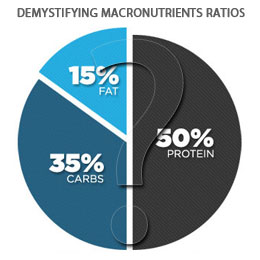 When it comes to fat loss, carbohydrates are not the enemy and as stated above are crucial to strength performance.
When it comes to fat loss, carbohydrates are not the enemy and as stated above are crucial to strength performance.
Over the years, carbohydrates have gotten a bad rap because the over consumption of carbohydrates leads to fat gain (de novo lipogenesis).
Well, I hate to be the bearer of bad news, but the over consumption of any macronutrient, not just carbohydrates, leads to fat gain. Excess calories lead to fat gain regardless of the macronutrient source.
With that being said, I think the best fat loss approach for strength and physique athletes involves the proper ratio of macronutrients with a slight reduction in calories relative to one’s metabolic rate.
As I mentioned above, carbohydrates are critical to ATP generation during intense exercise sessions such as weight training. Although you will want to keep your carbohydrate intake as high as possible while still losing fat during a diet to keep muscle glycogen stores high, the importance of the other macronutrients during dieting cannot be overlooked.
Fats are vital to hormone production and vitamin absorption, while proteins are necessary for tissue repair and the synthesis of new tissues. Therefore, all the macronutrients are needed in the proper amount for the body to function optimally.
The amount of each macronutrient needed daily vary from day to day and from person to person so there is no specific one size fits all set amount which is why some diets allocate percentages of macronutrients.
I find my clients to be the most successful with their diets composing in these ranges 40%-50% carbohydrates, 25%-35% protein, and 20%-30% fats. However, the Dietary Reference Intake (DRI) recommends a diet consisting of 45%-60% carbohydrates, 20%-35% fats, and 10%-35% protein.
Nevertheless, the bottom line to fat loss is calorie intake relative to one’s metabolic rate and having the proper macronutrient ratio can help ensure strength and physique athletes of not losing that hard earned muscle.
If you are looking for a fat loss nutrition plan, my Lean Physique Guide is a comprehensive fat loss guide using a flexible dieting and macronutrient based approach.
Further Reading:
Eat Carbohydrates for Fuel
Although low carbohydrate diets can serve as an effective means of fat loss, that style of dieting is not the most optimal means of fat loss for strength and physique athletes because these athletes are trying to retain muscle while losing fat.
The storage of carbohydrates in the form of glycogen used to generate ATP via glycolysis during intense bouts of exercise is crucial for strength and physique athletes and even more so when on a reduced calorie diet.
Therefore, concluding that strength and physique athletes would benefit more from a fat loss diet consisting of a slight decrease in daily caloric intake paired with the proper ratios of macronutrients.
Training Considerations
As a physique competitor, your main focus will be to have a well-developed, balanced, and symmetrical upper body (front and rear) along with a corresponding pair of calf muscles.
Your specific type of weight training should be focused around your needs and weak points. Although you aren’t judged on your leg muscles (quads, glutes, hamstrings), for general fitness reasons I wouldn’t recommend cutting them out of your weight training routine.
Cardio will likely also be a part of your training routine. It’s a great way to increase your daily caloric expenditure and to help shed fat.
Whether a competitor does high intensity intervals or low intensity state steady cardio, it’s really up to the individual. Determining factors are usually time, your body’s response to each type of cardio, and your energy levels.
I recommend doing a combination of both because there will be some days where you’re too drained to perform high intensity cardio and days where you don’t have time to do long duration cardio. Additionally, this will allow you to access what type of cardio works better for your physique.
See Also:
- How to Get Shredded Muscles for Physique Competition
- Introduction to Women’s Figure Competition Training
Posing for Physique Competition

Art is the expression of creative skill and imagination typically displayed in a visual form such as with paintings and sculptures. However, in terms of the human physique, art is displayed in the form of posing.
In physique competitions, posing is an art used to best display one’s best physical traits while simultaneously hiding one’s weak points.
Just like physique competitors spend countless hours dieting and training, they should spend an equal amount of time practicing the art of posing.
When it comes to physique competitions, there are two different rounds of posing.
Group Comparisons
No matter what division you compete in, all competitors go through group comparisons during pre-judging and an individual routine during the finals. Only a lucky few competitors get to go through group comparisons during the finals. Group comparisons are broken down into quarter turns for all competitors and quarter turns and mandatories for women’s physique and men’s/women’s bodybuilding classes.
- Quarter Turns
Quarter turns are the judges’ first and sometimes only impressions of competitors’ symmetry, conditioning, and muscularity. Therefore, a competitor’s presentation of their physique and transitioning between quarter turns is crucial.
It takes time to develop the endurance and skill to stay tight and make fluent/smooth transitions during quarter turns. Thus, a competitor should prepare adequately by taking the time to practice all the posing rounds their class is required to do.
- Mandatories
Women’s physique and men’s/women’s bodybuilding are required to do additional group comparison poses after quarter turns known as the mandatory compulsory poses.
During this round, competitors will display poses such as front double bicep, front lat spread, side chest pose, side tricep, rear double bicep, rear lat spread, abdominal and thigh pose, and the most muscular pose. However, not all of the aforementioned poses are required for women’s physique and bodybuilding.
There are a lot of variations to each one of these poses and as a competitor practicing this poses and variations will allow you to assess which variation best displays your physique.
A key point to remember is that no matter what poses a competitor is doing, the judges are always assessing their physiques in entirety which from top to bottom and left to right so when hitting your poses keep all your muscles flex and tight.
Also, don’t forget the judges will be watching competitors as they through their transitions into and out of poses.
Individual Routines
During the night show, competitors get the chance to display their physiques individually using a series of poses and music of their choosing. Some organizations allow props and costumes; however, they aren’t required.
Figure, Bikini, and Men’s Physique do more of a structured individual routine known as a T-Walk which usually consists of walking front center stage and performing half turns to showcase the front and back of their physique, then proceeding to the left part of the stage where competitors briefly stand in a pose of their choice, then walk to the right part of the stage and again briefly stand in a pose of their choice, then walk back to the front center of the stage pausing in a stance of their choice before finally walking off stage.
When it comes to music selection, try to find a song that you like and allows you to choreograph a sequence of poses that fit your physique, posing style, and flows to the music.
Don’t make the mistake of trying to throw a routine together in a few days. Instead, take the time to choreograph an artistic routine that flows with the rhythm and tempo of the music all while displaying your favorite and best poses.
Although individual routines aren’t used to decide overall placings, they do give the best poser award to the competitor with the best individual posing routine.
No Artist is Great Overnight
As with everything, the more work, time and practice you put in to posing, the more it will show. My posing routine at my very first show was very sub-par by my standards today, but after putting time in and working at it I won best overall poser three years later.
The key to take away from this article is that posing is an artistic expression of your physique, and it takes time to master.
Fat Loss for Physique Competition
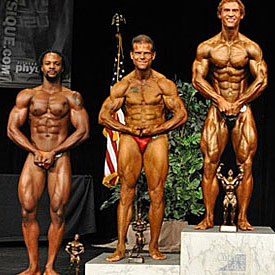
As a physique athlete, fat loss while preserving lean mass is the top priority while preparing for a competition.
What good are all the hours, months, years in the gym spent developing muscle if no one can see it because it is covered in a layer of fat?
It is for this very reason that competitors spend weeks and months dieting in order to achieve a certain level of leanness, in hopes to show off all their hard earned muscle.
In my opinion, leanness, sometimes referred to as conditioning, is one of the most if not the most important of the judging criteria.
Although competitors are judged on muscularity, symmetry, and presentation as well, being lean is a vital component because without leanness no one can appreciate your muscular development.
Getting stage lean certainly is not easy, but if you follow these guidelines it will lead you down the right path.
Track Your Calories and Macros

Although there are many ways to get the job done, I believe the most efficient and effective way to lose body fat is by tracking your caloric and macronutrient intake.
Unfortunately, just eating healthy is not enough when it comes to being stage lean. Although you may experience success in the earlier stages of dieting while cleaning up your nutrition, eventually you will need to adjust your diet when you hit a fat loss plateau.
How can you make a calculated adjustment without nutritional data? Are you taking in too many calories, carbs, or fats? Are you getting an adequate amount of protein to retain muscle?
Without knowing your current macronutrient and caloric intake, it is a shot in the dark at what may be hindering your progress and what needs to be done to get the fat loss ball rolling again.
By tracking your calories and macros you ensure that you can make the proper adjustments when necessary. I highly recommend using an app such as Myfitnesspal to track your calories and macros as it is very user friendly and has a huge food database.
Adjust Accordingly
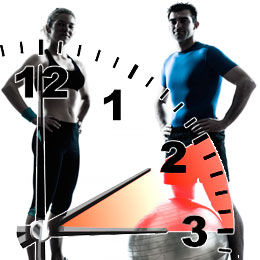 During your preparation for a physique contest, there will be times where your fat loss may come to a complete stop or your rate of fat loss is has slowed to a minimum.
During your preparation for a physique contest, there will be times where your fat loss may come to a complete stop or your rate of fat loss is has slowed to a minimum.
As you lose weight, your metabolic rate slows as well eventually balancing out your energy expenditure with your energy or calorie consumption.
When it comes to making adjustments, the solution is fairly simple, but it is important not to jump the gun. Usually, the solution to a fat loss sticking point is to increase energy expenditure, decrease calorie consumption, or both. However, adjustments are better served in small doses.
Adding too much energy expenditure through cardio or cutting too many calories, generally leads to two undesirable scenarios.
In one scenario, restricting and exercising too much could lead to the competitor breaking down and binging. In the other scenario, when the competitor needs to make another adjustment, it could potentially leave them with very little calories, an excessive amount of cardio, and muscle wasting.
Consuming too few of calories and over exercising in an attempt to shed excess body fat is a recipe for disaster. Not only is that strategy not sustainable for shedding body fat, it also risks muscle loss and a metabolic crash.
Adjustments are better served in small doses so be sure to give yourself plenty of time to make the necessary adjustments as this will allow you to lose fat without sacrificing your hard earned muscle.
Take Your Time
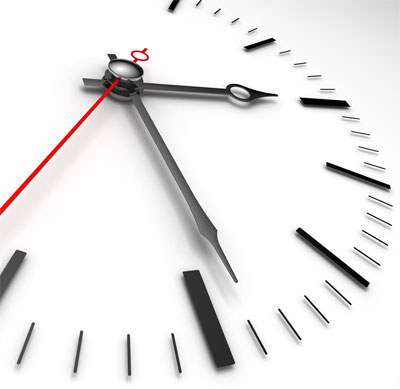 Aiming to lose 1lb-2lbs a week may sound redundant, but a smaller caloric deficit like so is one of the most effective ways to lose fat while retaining muscle.
Aiming to lose 1lb-2lbs a week may sound redundant, but a smaller caloric deficit like so is one of the most effective ways to lose fat while retaining muscle.
I also recommend giving yourself a few more weeks than you may need just in case you hit a fat loss plateau. This is especially true for new competitors whom aren’t familiar with getting themselves in competition shape.
If you believe you need to lose 20lbs of fat to be stage ready, I’d recommend taking about 25 weeks to prep. This may seem like an extremely long time, but if you’re new to competing you may need the extra time to adequately prepare as you may hit a few weight loss hiccups during your journey.
As you become more experienced with competition dieting or if you hire an experienced competition prep coach, you’ll be able to shorten your prep time because you or your coach will know how to efficiently prepare for a physique competition.
Keep the Heavy Weights
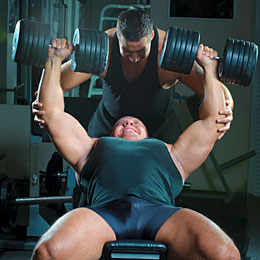 When it comes to muscle tissue the old adage “use it or lose it” speaks the truth. Therefore, as you are in the dieting stages in preparation for a physique competition, you need to be sure to keep up the intensity and the heavy weights in the weight room.
When it comes to muscle tissue the old adage “use it or lose it” speaks the truth. Therefore, as you are in the dieting stages in preparation for a physique competition, you need to be sure to keep up the intensity and the heavy weights in the weight room.
Instead of that old theory of lifting lighter weights and doing more reps to get cut, you should strive to keep lifting the same (or more) weight for the same amount of reps while letting your diet “cut” you up.
Although you will more than likely lose some strength during the dieting phase, the strength you do retain is a relatively good indicator of how much muscle mass you have preserved.
By retaining as much muscle as possible, you will be ensuring that you are improving your body composition and not just losing weight. By keeping the intensity up in the weight room and taking your time during the dieting phase, you will be more likely to hang onto the muscle mass you have worked so hard to acquire.
Don’t Skip Cardio
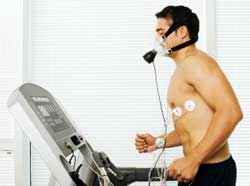 Cardio is a great tool for increasing energy expenditure and fat oxidation during your contest preparation.
Cardio is a great tool for increasing energy expenditure and fat oxidation during your contest preparation.
While high intensity interval training (HIIT) may be more favorable for fat loss and muscle preservation, the type and amount of cardio performed is highly individualistic.
Competitors whom are naturally thin may need fewer and shorter cardio sessions than their naturally heavy counterparts.
Generally, HIIT sessions only last 20-30 minutes while steady state sessions may last anywhere between 30- 60 minutes and in extreme cases done twice daily.
Some competitors may only have enough time for HIIT for cardio while others may just be too physically exhausted after their full body workout to perform HIIT cardio.
My personal belief is that competitors should find what works best for them as the main focus of cardio is to help expend more calories and both forms of cardio do so.
The Bottom Line
Whether you are competing in bodybuilding, bikini, figure, or physique, as a competitor fat loss is essential to your success. By tracking your macros to make adjustments when needed, keeping your strength up, and doing cardio to expend extra calories, you will be able to successfully reach your desired goals.
The Bottom Line
If you’re unsure or thinking about competing in the men’s physique competition, I recommend checking out a local show.
Not only will this give you more insight on what to expect, it will also help you decide if this is something you truly want to do if you’re on the hinges.
Although some competitors choose to go through the contest preparation stage alone, I strongly recommend that a beginner hire an experienced coach to help guide them along the way.
About Julian Brown
JulianBrownTraining.com Julian is the co-owner of The Yard Fitness, an established fitness writer, a professional natural bodybuilder, a fitness & sport nutrition specialist, and a certified personal trainer. He began strength training at the young age of fourteen to improve his sports performance and hasn’t looked back since. Julian is a graduate of Grambling State University, ACE & NASM certified, and he has over a decade of personal experience in strength training.

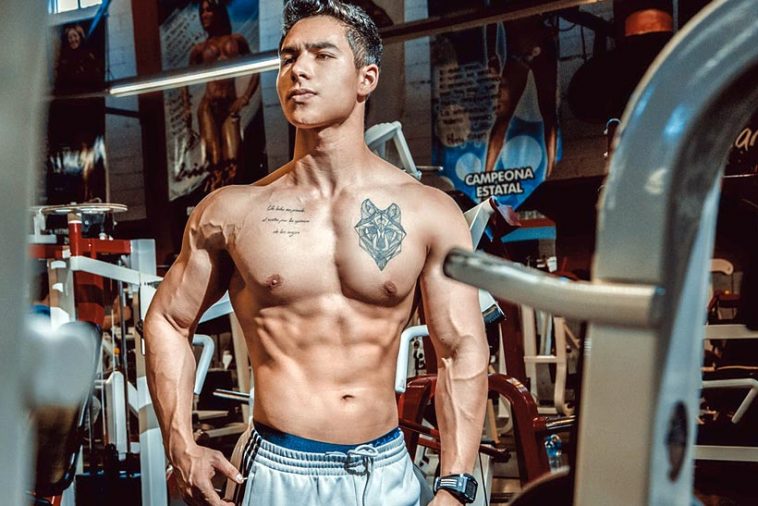
 Why Low Carb Diets are Not Ideal for Strength and Physique Athletes
Why Low Carb Diets are Not Ideal for Strength and Physique Athletes
Awesome article, thanks for sharing!